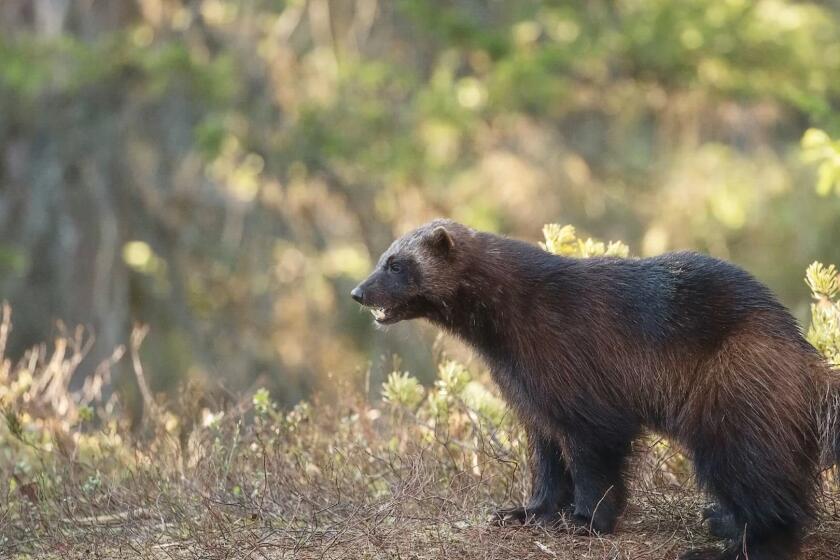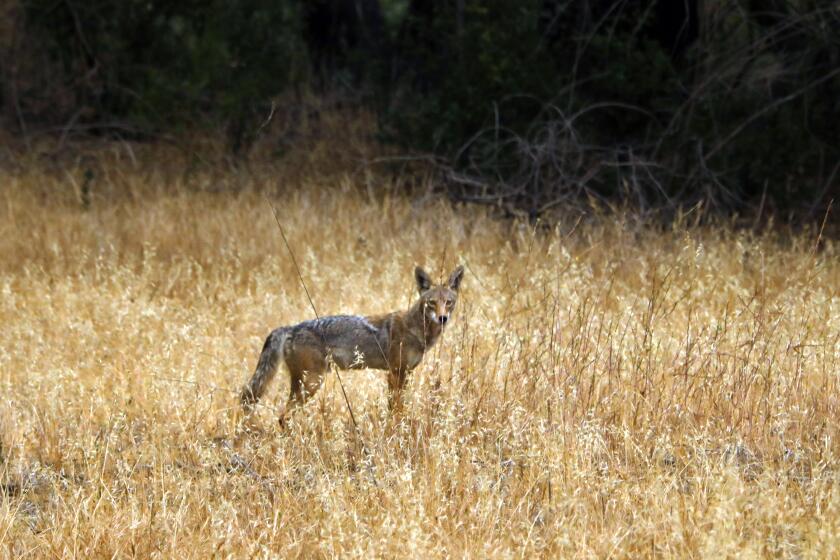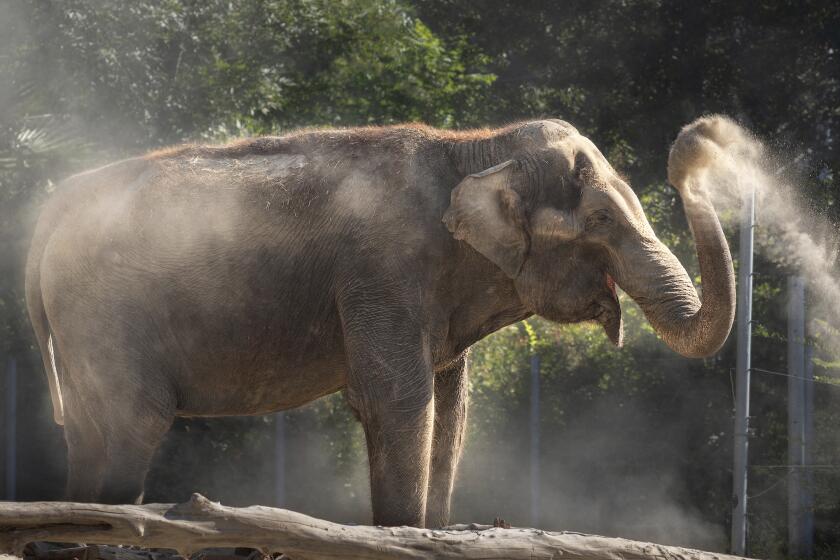For Newly Named Panda in San Diego, It’s a Beautiful Life
And let the mania begin.
Mei Sheng, the giant panda cub born in August at the San Diego Zoo, will go on exhibit Friday, two months earlier than anticipated.
Much is unknown about the endangered species with the hypnotic black-and-white patterns on the fur. On one point, however, there is no dispute: Wherever pandas are exhibited, their drawing power exceeds that of all other animals, making them, in zoo-talk, the ultimate charismatic mega-vertebrates.
“Let’s face it: They’re just about the cutest mammals on God’s Earth,” said Don Lindburg, leader of the zoo’s giant panda team.
One measure of panda popularity is the panda-cam on the zoo’s Internet site, www.sandiegozoo.org. Since the camera went live on the cub Aug. 27, six days after his birth, viewership has increased tenfold and some days exceeds 200,000 clicks.
By Chinese tradition, pandas are not named until they are 100 days old. On Tuesday, the zoo announced the 14-pound cub’s name, which translates to Beautiful Life or Born in the U.S.A.
Mei Sheng (pronounced may-shun) is the result of natural mating between the zoo’s panda pair, 11-year-old female Bai Yun and 11-year-old male Gao Gao. That alone marks Mei Sheng as extraordinary.
In 1999, a female cub, Hua Mei, was born to Bai Yun and a male named Shi Shi after artificial insemination. Shi Shi, whose lack of interest in mating became a local embarrassment, was returned late last year to China, in exchange for the younger and friskier Gao Gao.
In San Diego, where zoo animals gain constituencies, the sex life of the pandas has been of enormous public interest. One local TV anchorman suggested before the name Mei Sheng was announced that Shi Shi’s lack of sexual interest may have been caused by having a name that sounded feminine.
At a news conference announcing the new cub’s name, Thompson Fetter, president of the San Diego Zoological Society, explained that panda behavior is not influenced by the names people give them.
“Luckily, they’re solitary animals,” said Fetter, so the cub is “not going to have to go on the playground and get beat up by other boys for having the name May.”
Although they are the most popular of the zoo’s 6,000 animals, Bai Yun, Gao Gao, Hua Mei and Mei Sheng may be among the most transient. They belong to the Chinese government under a research agreement between the U.S. and China to allow scientists to study the panda’s reproductive secrets.
With four animals, the San Diego Zoo has the largest panda population in the U.S. The National Zoo in Washington, the Atlanta Zoo and the Memphis Zoo each have a pair on loan from China.
Hua Mei and Mei Sheng are the only panda cubs born in the U.S. to live beyond four days. A previous couple at the National Zoo had four cubs, but none survived.
Within two months, Hua Mei is expected to move permanently to China. Until then, she and Gao Gao are on display in separate grottoes from 9 a.m. to 4 p.m. Starting Friday, Mei Sheng and Bai Yun will be displayed from 11 a.m. to 2 p.m.
Hua Mei was 6 months old before she was ready for exhibit. Mei Sheng is 4 months and considered ready for center stage. Mother is nearby much of the time for purposes of suckling and warmth, but there are increasing periods of independence.
“Every day he’s a little more mobile,” Lindburg said.
More to Read
Start your day right
Sign up for Essential California for news, features and recommendations from the L.A. Times and beyond in your inbox six days a week.
You may occasionally receive promotional content from the Los Angeles Times.






